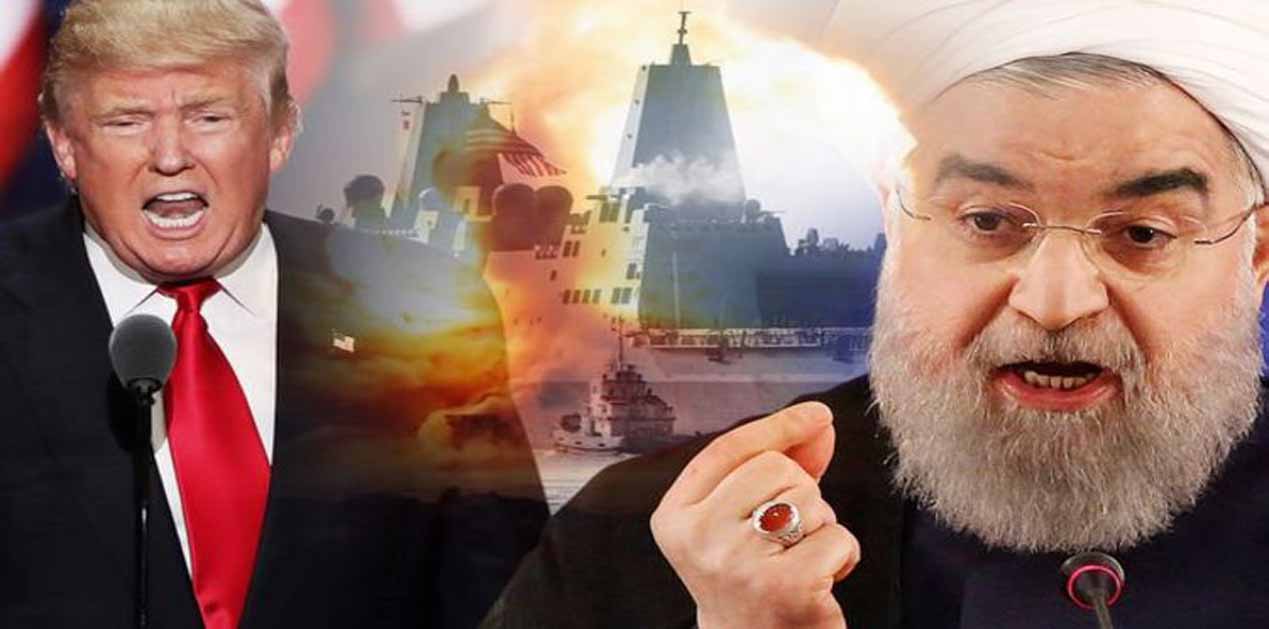Introduction
The incident of Iranian military downing a US Drone flying over its airspace on 20 June 2019 evoked immediate and strong response from the US. Reports suggested the US President ordered retaliatory military strikes against Iran, to be executed at dawn on 21 June, before changing his mind at the last moment. Recent events like this have brought the Persian Gulf region closer to the threat of a military conflict than it has been before in the recent past. While the present state of tensions can be attributed to recent spurt in the incidents in the Gulf region involving attacks on oil tankers in the Strait of Hormuz as well as missile attacks on Saudi airports and oil pipelines since May this year, the roots to the tension go further back. Election of Donald Trump as the US President in 2016 and his election promise on annulling the Iran Nuclear Deal secured by the previous US president Obama in July 2015 could perhaps have stronger roots to the present crisis in the region.
US Pull-out from Iran Nuclear Deal
On 08 May 2018, President Trump announced that the US was pulling out of the Iran nuclear deal or ‘JCPOA’ as it is called. Delivering on his election promise, he called it a “horrible one-sided deal that should have never, ever been made”. Promising strict and unprecedented economic sanctions, he urged the international community to join the US in confronting Iran. Following it up on 21 May, Mike Pompoe, the Secretary of State, announced a list of 12 demands for inclusion in any future deal with Iran, the stated purpose being to ensure that Iran is prevented from developing nuclear weapons ‘in perpetuity’.
Despite Britain, China, France, Germany, Russia and the EU, the other signatories in the Iran Nuclear deal sticking on and asking Iran to abide by the conditions of the deal, the US went ahead at tightening the noose around Iran with imposition of tough economic sanctions. The initial effect was felt on 06 August 2018 when the first round of sanctions kicked in targeting Iran’s key industries, including cars and carpets as well as access to US bank notes. On 05 November 2018, on completion of 180 days from the announcement of pull out from the nuclear deal, the US kicked in the second round of sanctions, re-imposing virtually all sanctions on Iran that had been lifted or waived under the JCPOA, targeting key sectors of its economy, such as the oil, natural gas, shipping and shipbuilding. Although countries like India, China and Japan were given temporary relief for six months to scale down oil imports and find viable alternatives, the squeezing out of revenue from Iranian economy started hurting Iran badly.
Continuing its pressure on Iran, on 09 April 2019, the US announced designation of Iran’s principle military arm, the Islamic Revolutionary Guard Corps (IRGC) as a ‘Foreign Terrorist Organization’, putting severe restrictions on its travel and economic activities. Iran, in turn designated US Central Command (responsible for operations in the Gulf region) as a terrorist organization. Following up and in response to intelligence inputs on threat of stepped up attacks against US forces and assets in the Gulf region, US Secretary of Defence John Bolton announced on 05 May, the deployment of an Aircraft Carrier Group along with B-52 Bomber Squadron to the Persian Gulf region.
On 08 May, the US announced imposition of third round of sanctions on Iran, targeting its metal industry, which is its largest source of non-oil revenue as well asking India and other exempted countries to fully stop oil imports from Iran by June 2019. Also, on 24 May, the US announced deployment of additional 1,500 troops to the Gulf region and declared emergency sale of military equipment including arms to Saudi Arabia, UAE and Jordan. It also ordered its Mission to scale down staff in Iraq to essential elements. These measures were perhaps the final blow to any prospects of reconciliation and Iranian promptly announced ramping up of production of nuclear fuel and threatening to break free from the restrictions imposed on it by the nuclear deal. Events that have followed since have only added to the intensity of discord and animosity between the US and Iran, raising the chances of a potential military conflict.
Recent Attacks in the Strait of Hormuz
On 12 May, four ships, including three oil tankers, are damaged in an attack off the coast of UAE. Immediate fingers were pointed at Iran which denied it. While US Secretary of Defence John Bolton claimed that Iran was "almost certainly" behind the attacks, while the UAE declared on 06 June that “the initial findings of a multinational investigation into the attacks point to the likelihood that a state was behind them, but does not blame any specific country”.
On 13 June, while the Japanese Prime Minister was in Iran to meet the top leadership including Supreme Leader Ayatollah Ali Khamenei, two oil tankers, a Norwegian and a Japanese tanker come under attack in the Gulf of Oman. Video footage released by US Central Command, indicated towards an IRGC patrol boat coming along side and pulling up some equipment alleged to be an unexploded limpet mine and taking it away. US again accused Iran of direct role in the attacks, but Iran again denied it explicitly. The US ordered deployment of additional 1,000 troops to the region while Iran threatened that it was days away from breaching the levels of enriched uranium as per the nuclear deal, if the other signatories don’t take any action to save it soon.
On 20 June, a US military drone ‘Global Hawk’, on a maritime surveillance mission over the Strait of Hormuz was shot down by the Iran, alleging that it had intruded into its airspace. US rebutted the claim saying that the drone was in international waters and that the Iranian action was “unprovoked”. Reports of the president giving ‘go ahead’ to a military strike on Iran missile and radar sites before pulling back just before execution on 21 June have only added suspense and intrigue to the whole situation the region.
Along-side these attacks in the Strait of Hormuz, there have been incidents elsewhere in the region too which have links to the current developments.
Other Related Incidents in the Region
On 14 May, days after the first attack on oil tankers, Saudi Arabia complained of drone attacks on the East-West pipeline of its national oil company Aramco. The Saudi Energy Minister Eng Khalid Al Falih stated that pump stations in Dawadmi (200 km west of Riyadh) and Afif (470 km west of Riyadh) in Riyadh Governorate were attacked by armed drones, adding that these attacks threatened not only the Kingdom but also the security of world oil supplies and the global economy. Masirah TV run by Yemen’s Houthi group, without identifying the targets or time of the attacks, reported the same day that the Houthis had launched drone attacks on Saudi installations. Earlier, on 25 March 2019, Saudi Arabia had reported of seven missiles being launched from within the territories in Yemen towards its cities of Riyadh, Jazan, Khamis Mushait and Nazran. All the missiles were intercepted and destroyed and Iranian backed Houthis were blamed for the attacks.
There was yet another missile attack report on Saudi territory on 12 June 2019. The attack was on Abha International Airport in which 26 civilians present in the airport building’s arrival hall were injured. This was followed by another missile attack on the same airport on 23 June, resulting in the death of one person. Both these attacks were again attributed to Yemen’s Houthi. In a separate incident elsewhere in the region, on 19 May, a Katyusha Rocket was fired at the US Embassy in Baghdad, apparently by the Shiite militias, again allegedly supported by Iran.
Prognosis
The events leading up from the US pullout from the Iran nuclear deal in May 2018 to the attacks on oil ships and the US military drone in the Persian Gulf region clearly indicate to a volatile period ahead. While the US seems determined to ‘teach Iran a lesson’ and perhaps force it to the negotiating table or even force a regime change (an oft stated desire of the US administration), Iran is clearly not succumbing to US pressures, at least for the time being. Iranian economy has taken a severe hit post the sanctions, but history tells us that Iran is likely to find a way out and survive. Its threat of scaling up the nuclear fuel enrichment and various assessments indicating that that Iran could weaponise its nuclear program soon if it wanted to, the ongoing developments present a real and grave threat to regional security. Also, the grave danger to global oil trade and the adverse impact on struggling global economy due to spike in oil prices will be difficult for the oil importing nations to absorb. For Iran, on the other hand, it would be a low cost option to come back hard at the US and its allies.
Here, it is also interesting to see the positions taken by the US and Saudi Arabia in the region which present an interesting paradox. While the US has clearly stated that it wants to scale down its participating in global and regional conflicts, Saudi Arabia under its Crown Prince Mohammed Bin Sultan has been ratcheting up its military and political adventures in the region. Its continuing conflict in Yemen, diplomatic spat with Qatar, push for an anti Iran military alliance ‘MESA’ or ‘Arab NATO’ and sudden cozying up with Israel (at the expense of traditional Arab support to the Palestine cause) are a just such few examples. It would thus be interesting to see in the case of a potential military escalation against Iran, whether the US will commit itself directly or if Saudi Arabia, along with UAE and others will have to bear the brunt of committing boots on ground and get embroiled in a long and bloody conflict. On the other side, Iran seems quite sure of itself despite continued slide of its economy and threat of a prolonged military conflict. With Iraq and Syria favorably aligned, its militias and proxies (Houthis, Hezbollah and others) poised to inflict damage across the Levant (and even into Saudi Arabian territories), and Russia likely to support its cause (like Syria), it could well be advantage Iran in the longer run.
(Rajeev Agarwal is a Research Analyst on West Asia and Afghanistan)
(The paper is the author’s individual scholastic articulation. The author certifies that the article/paper is original in content, unpublished and it has not been submitted for publication/web upload elsewhere, and that the facts and figures quoted are duly referenced, as needed, and are believed to be correct). (The paper does not necessarily represent the organisational stance... More >>
Image Source: https://images.spot.im/v1/production/djy7kwc14ixexcezkqt4










Post new comment